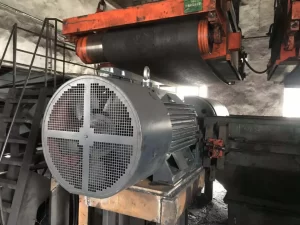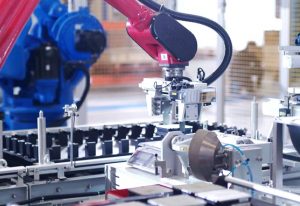PREVIEW
What is Permanent Magnet Synchronous Motor?
The Permanent Magnet Synchronous Motor (PMSM) is an AC motor that generates torque by combining the rotating magnetic field of the armature with an excitation magnetic field created by direct current. It runs at synchronous speed, which is a constant speed. PMSM and synchronous motors are both members of the AC motor family and both use stator windings. Notably, the rotor of a PMSM rotates at the same speed as the rotating magnetic field generated by the stator winding, hence its name: synchronous motor.

Synchronous motors can be categorized into two main structural forms: rotating magnetic pole and rotating armature types. The rotating magnetic pole design offers several notable advantages, including a lightweight rotor, a straightforward manufacturing process, minimal current flow through brushes and slip rings, making it the preferred choice for large and medium-capacity synchronous motors. Within the rotating magnetic pole type, there are two further divisions based on the rotor shape: salient pole and hidden pole types. The salient pole variety finds application in situations where low speed is necessary, featuring a thick and short rotor with an uneven air gap. In contrast, the hidden pole type is commonly employed in high-speed scenarios, characterized by a thin and long rotor with a uniform air gap.
Advantages of Permanent Magnet Synchronous Motor
The rotor exhibits a high magnetic flux density as a result of its permanent magnet construction, which eliminates the need for excitation current and its associated losses. The permanent magnet synchronous motor significantly lowers excitation current on the stator side winding, as well as copper and iron losses on the rotor side, resulting in a significant reduction in reactive current when compared to asynchronous motors. The synchronization of stator and rotor magnetic potentials eliminates fundamental wave iron loss in the rotor core, leading to higher efficiency and power factor compared to synchronous motors. Permanent magnet synchronous motors are typically designed with high power factor and efficiency, even when operating under light load conditions.
Permanent magnet synchronous motors have strong mechanical attributes that allow them to withstand torque disturbances brought on by changes in load. The inertia of the permanent magnet synchronous motor is decreased by using a hollow structure for the rotor core, leading to noticeably quicker starting and braking times than with asynchronous motors. Compared to its asynchronous counterpart, the permanent magnet synchronous motor performs better in fast response scenarios due to its superior torque-to-inertia ratio.

In addition, compared to asynchronous motors, permanent magnet synchronous motors offer a significantly smaller size and a relatively lighter weight. Under the same conditions of heat dissipation and insulating materials, the power density of a permanent magnet synchronous motor exceeds that of a three-phase asynchronous motor by more than twofold.